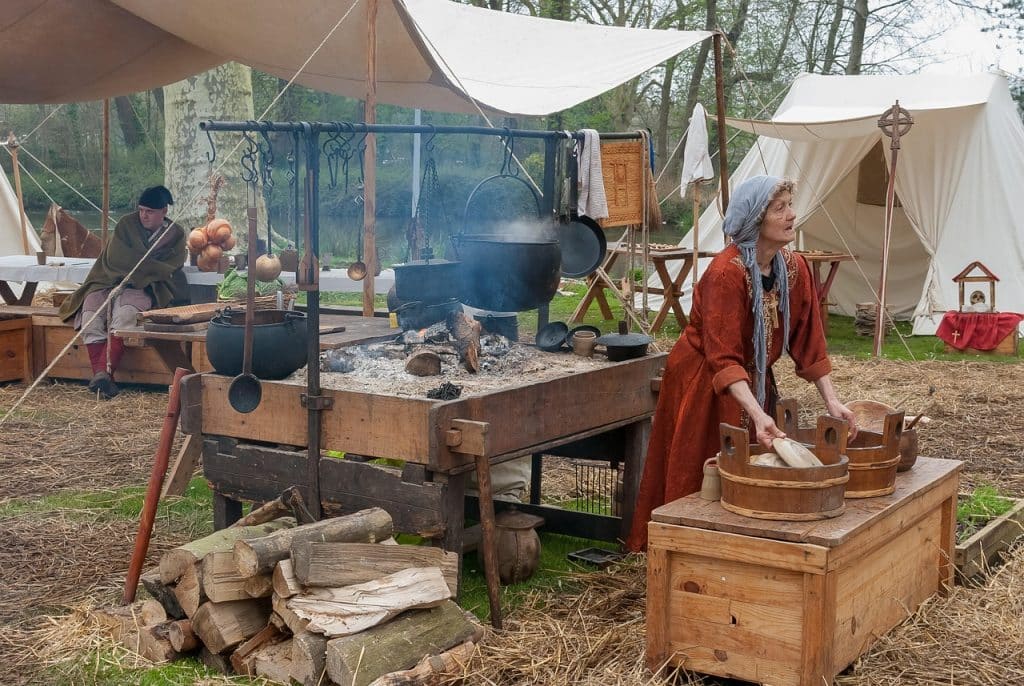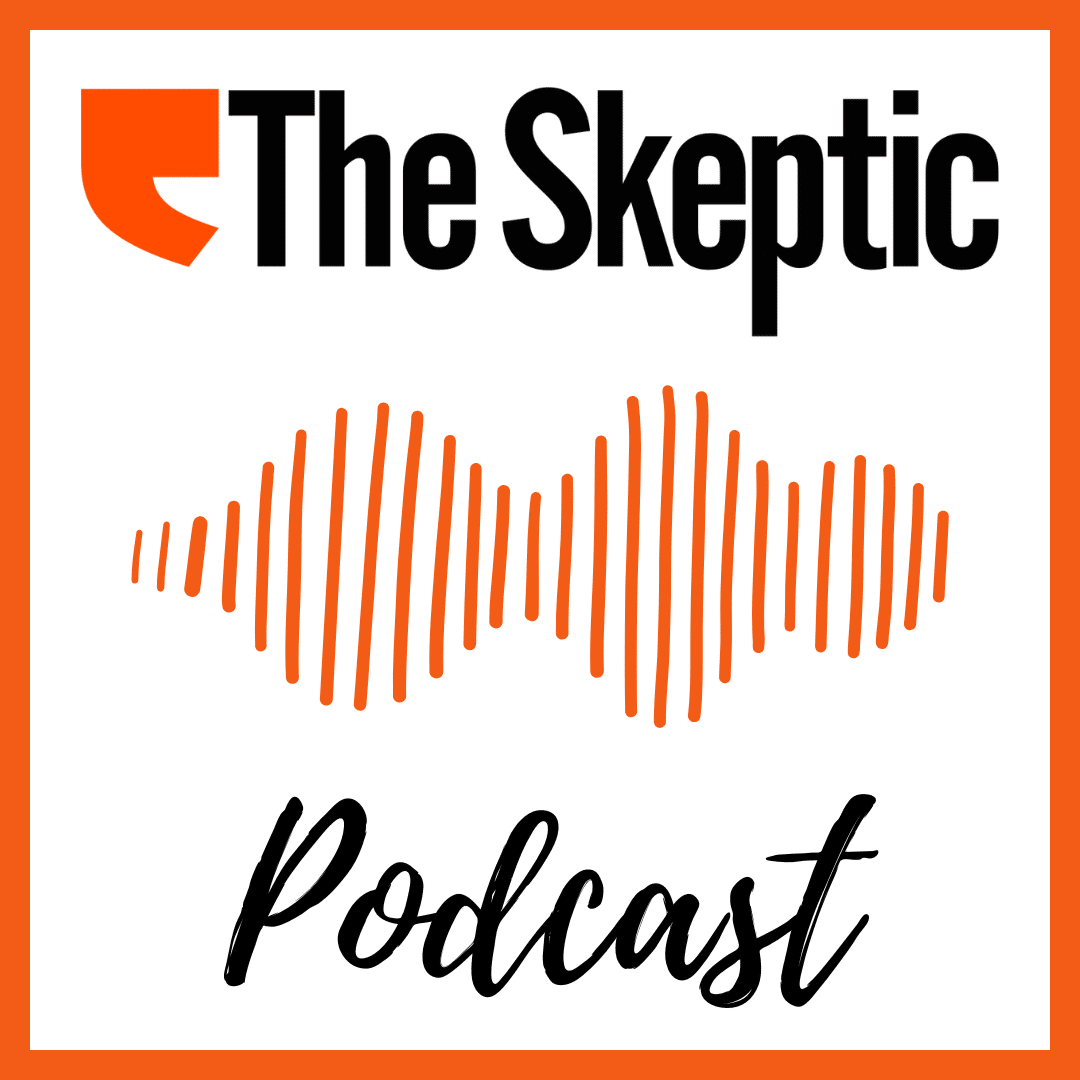Picture a stereotypical scene in a medieval village. What do you imagine? Children playing in the dirty unpaved street perhaps, maybe two men on top of a cottage fixing the thatch, perhaps a young woman sweeping the front step, worrying about her elderly 35-year-old mother who is dying in the back room… of old age.
What’s wrong with this picture?
According to many articles discussing popular misconceptions about history, there’s a pervasive myth that people died of old age in their mid 30s, and that ancient Greeks or Romans “would have been flabbergasted to see anyone above the age of 50 or 60.”
On her blog, medievalist Dr Eleanor Janega says (emphasis mine):
“One of the really rampant myths that I deal with on a regular basis is about life expectancy in the medieval period. What gets trotted out, over and over, is the idea that “the average life expectancy in the medieval period was 35, so when you were 32 you were considered […] old”. Friends, this is extremely not true, and this myth is also damaging to us now.”
My search skills must be off, because I’ve really struggled to find this myth anywhere. Though in fairness, Google’s AI kind-of reports it as a genuine belief, as when queried with “peasants used to die in their thirties” Gemini replied:
“This statement is generally considered true; due to poor sanitation, lack of medical care, harsh working conditions, and frequent outbreaks of disease like the Black Death, the average life expectancy for peasants in the Middle Ages was often around 30 years old, meaning many died before reaching their forties.”
Presumably Dr Janega has spoken with some who believe that, in times gone by, people were considered old in their thirties, but it certainly isn’t a pervasive myth in any written sources I could find, nor even in popular culture.
To take the most famous movie set in medieval Europe from my own childhood, Robin Hood: Prince of Thieves, the male and female romantic and action leads, Kevin Costner and Mary Elizabeth Mastrantonio, are both in their thirties and certainly not depicted as elderly. The main co-star is played by Morgan Freeman, then in his fifties, and the main villain by Alan Rickman, as a vigorously evil forty-something Sheriff of Nottingham. The main characters depicted as elderly are Mortianna, played by Geraldine McEwan, then nearly 60, and Lord Locksley – Robin’s father – played by a fifty-something Brian Blessed, who may be portrayed as an older man but is clearly still in full bluster, and far from death until he meets his untimely and violent end.
Or to take an arguably even less historically accurate depiction of that period, Braveheart, in which the titular action lead was played by Mel Gibson, then nearing forty, and the ageing king was played by Patrick McGoohan, then in his late sixties. Neither film matches the idea of someone approaching decrepitude in their mid-thirties, because anyone who thinks about it for even a few seconds knows that people who’d be old enough to collect a pension in 2025 also existed before the modern era.
It isn’t just Dr Janega who has had this experience, though, and the BBC claims that “it’s common belief that ancient Greeks or Romans would have been flabbergasted to see anyone above the age of 50 or 60”. This is contradicted by no less a source than Bill and Ted’s Excellent Adventure, which features a 60-something Tony Steedman as Socrates, and is backed up by this year’s disappointing Gladiator sequel, which co-stars 70-year-old Denzel Washington as an occasionally-sword fighting Macrinus, and features an elderly senator played by 86-year-old British thespian Sir Derek Jacobi.
I don’t doubt that the authors of these articles have spoken to at least some bafflingly ill-informed people who have this belief, however, and their error seems to arise from a combination of people being bad at maths, and not understanding that life expectancy and lifespan are two different things.
As per the Max Planck Institute for Biology of Ageing (emphasis in original):
“Life expectancy is the amount of time a person is expected to live based on the year they were born, their current age and various demographic factors, including gender. It is always statistically defined as the average number of years of life remaining at a given age. So life expectancy is basically the average lifespan of a population. In contrast, maximum lifespan is the maximum time that one or more members of a population have been observed to survive between birth and death. The oldest woman in the world lived to over 122 years old, so the maximum human lifespan is often given as 120 years.”
Both lifespan and life expectancy have increased over the years, but for someone in their mid-thirties to be elderly, their lifespan would have to be only a little older, and the lifespan of humans has – as per a famous Bible quote – been 70 or more years since the start of recorded history. Indeed evidence suggests that it may well have been close to that since early modern humans have existed.
On the other hand, if you have a life expectancy at birth of 35 then of course you can still live to 70 or more, you’re just statistically unlikely to reach that age, because you’ve died from illness, starvation, accident or violence.

Calculating historical life expectancy and causes of mortality is quite difficult for obvious reasons – written records before the early modern period are somewhere between incomplete and non-existent – which leaves space for research in several overlapping academic fields, from health economics to biological anthropology. While I will not attempt to communicate a full survey here, the majority of academic sources I found suggested that life expectancy at birth was very low indeed by modern standards in the medieval period.
According to Robb et al (2021) in the International Journal of Paleopathology, “life expectancy at birth for females is 25.0 years, for males, 22.8 years” in the Middle Ages, which is similar to historical demographer LR Poos’ mention of life expectancy at birth of around 25 to 28 for cohorts from medieval Cambridgeshire and Yorkshire in his 1986 paper “Life expectancy and age at first appearance in medieval manorial court rolls” in the journal Local Population Studies.
Health economist John Yfantopoulus cites a slightly higher figure of 30 to 40 years life expectancy at birth for the early middle ages and medieval period in the abstract for his article “Life expectancy from Prehistoric times to the 21st Century” in Deltos:
“During ancient times, several historical sources from Egypt, Greece and Rome estimate life expectancy also at 20 to 35 years. Warfare, infectious diseases, malnutrition, and high rates of infant mortality are recorded as the main factors for this short life span. In the Middle Ages (500–1500 AD), the great killers like the Plagues (Black Death) had a significant impact on the reduction of population. Life expectancy fluctuated around 30 to 40 years.”
Despite his reference to the plague, Yfantopoulos notes later that in the late Middle Ages, “30 percent of infants died within their first year”, and this is indeed the main cause of a lower life expectancy. When a third of the population never makes it far from their crib, the arithmetic mean life expectancy is of course savagely reduced.
While I’d argue against hand-waving away horrific levels of infant death as an issue for statisticians, what about those who don’t die as a child? Some of these myth-busting articles have made claims like the following:
“If a medieval person survived to adulthood, he would likely live into his 60s or 70s.”
On the face of it, this seems far-fetched. Thinking about just your immediate circle, how many people do you know with conditions that would have killed them before modern medicine – perhaps something serious like one of several treatable cancers, or diabetes, or perhaps something apparently more minor like a cut, which could develop into sepsis and kill you? Quite a few, I’d guess. Then consider those who never got ill from the various fatal diseases that have been eradicated due to vaccines, like smallpox or polio. It feels like there must have been a lot of premature deaths in Ye Olde England, but as skeptics we need evidence, not gut-feeling. What do we know?
We can of course start with basic statistics, and anyone with a basic head for numbers knows that a 30% infant death rate alone cannot reduce life expectancy from 75 to 35.
Robb et al note that while infant death is far and away the largest cause of “Years of Life Lost”, their model suggests other very significant causes of death for people in that period, with tuberculosis, fever, viral pulmonary infections, and diarrhoeal and GI infections all following in significant numbers in the second tier, and all likely to have been a major cause of mortality before old age.
Indeed, the available statistics bear this out. Records of English male landholders from the Middle Ages are used by MA Jonker in the Journal of the Royal Statistical Society to suggest a life expectancy at 25 of a further 23.3 to 25.7 years – so an average age of death around 50.
What about wealthier people? A review of the ages at death of (male) members of the medieval English nobility finds that 50% were dead before 50, with only 11% making it past the age of 70.
The claim that a person surviving to adulthood would likely live into their 60s or 70s is simply not supported by the evidence.
The idea advanced by some myth-busting academics that “many people would have lived much longer, into their 70s, 80s, and even older” is likewise not supported by the evidence, unless we think that 11% of even the highest-born adults living until their 70s counts as “many people”.
In other, perhaps less privileged circumstances, your chance of making old bones was even worse. Victoria Russeva, in her 2003 study using skeletal remains from 8th to 10th Century Bulgarian grave sites, notes that “in some populations, no survivals over 60 years have been ascertained.”
Why does this pedantry matter? As historical fiction author Sarah Woodbury says:
“It isn’t that medieval people somehow were biologically different, but the structure of their lives, their resources, and their healthcare were dramatically different, ensuring that far fewer people lived as long as the average person does now.”
To ignore the advances of modern medicine, pharmaceuticals, sanitation and birthing practices is to risk losing them, as we are already finding out with lowering vaccination rates, increasing antimicrobial resistance and, of course, emerging infection risks.



